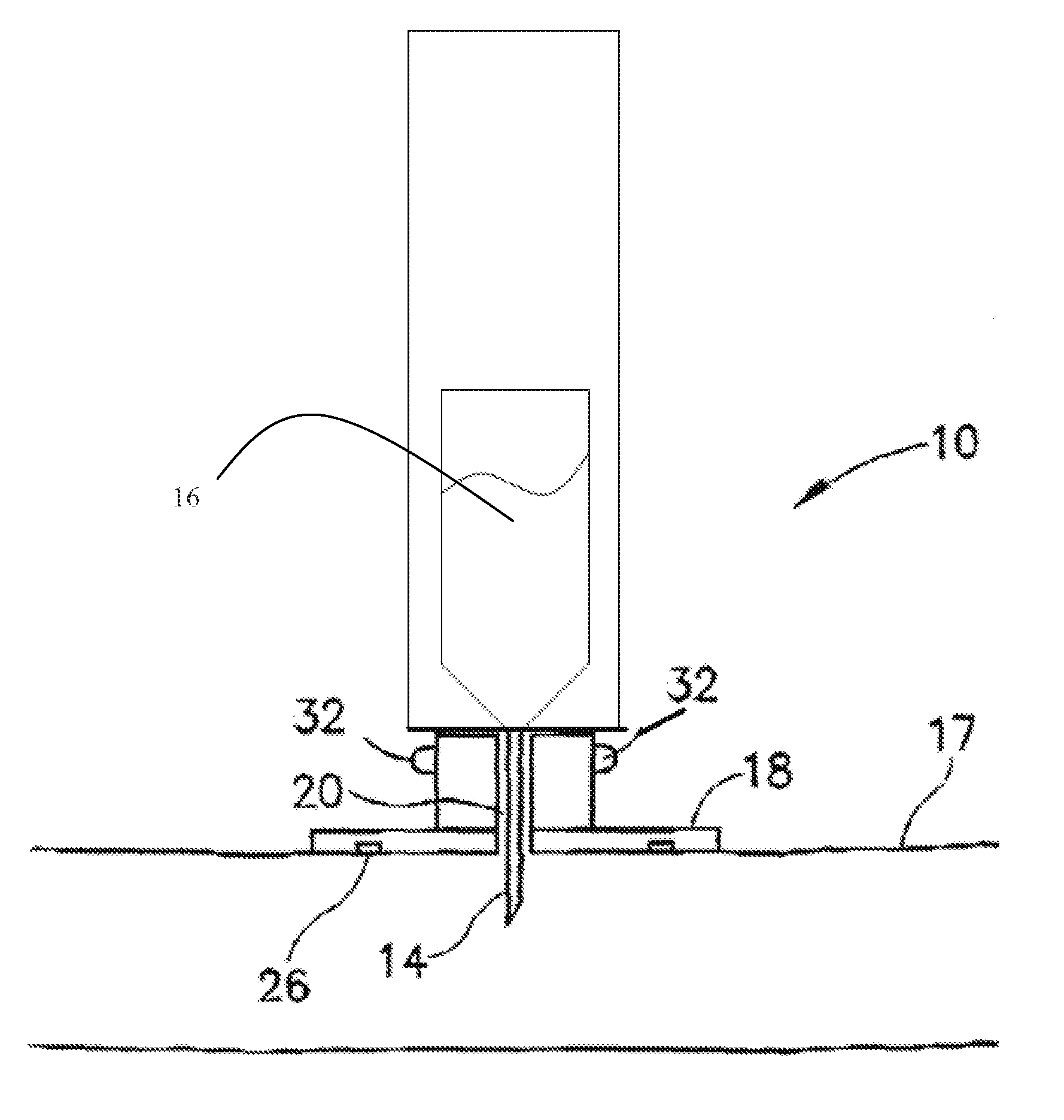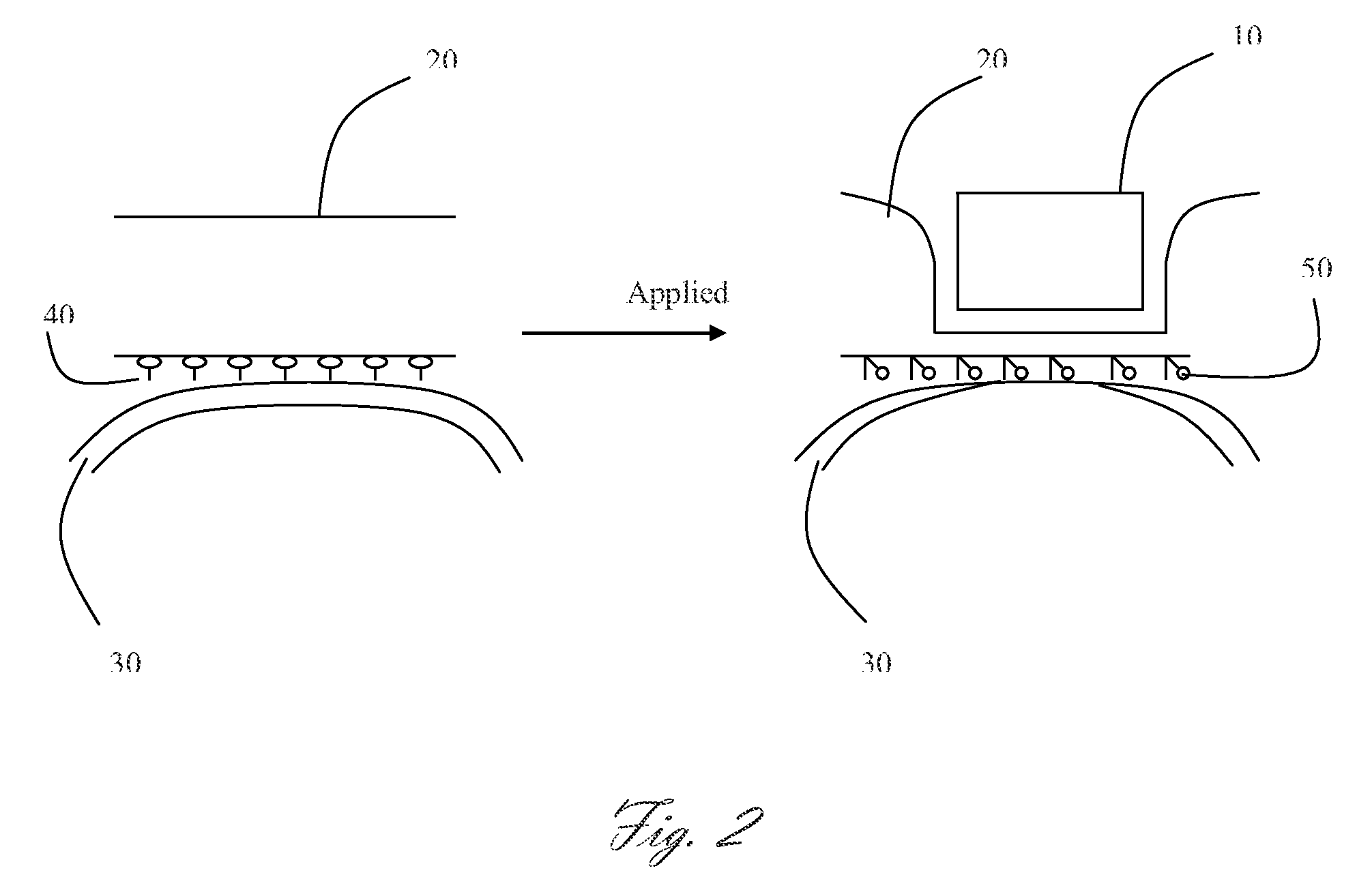Device and method for piercing a patient's skin with an injector whilst reducing pain caused by the piercing
a technology of injector and skin, which is applied in the field of devices and methods for piercing the skin of patients with injectors whilst, can solve the problems of unanswered questions about cooling rate, unanswered questions about optimal cooling rate, and pain induced by needle insertion, and achieve the effect of removing pain
- Summary
- Abstract
- Description
- Claims
- Application Information
AI Technical Summary
Benefits of technology
Problems solved by technology
Method used
Image
Examples
example 1
[0168]A clinical test was performed in which:
[0169]The objective of the test was to prove that the apparatus according to the present invention is a pain-free injector (i.e. it successfully prevents pain inflicted by needle prick injuries caused by injections in healthy volunteers).
[0170]Injections with a non-chemical local anesthesia (i.e. the cooling), using an injector based on EZ-Ject technology were performed.
[0171]In the test 41 healthy adult volunteers have participated in the study.
[0172]Each one has been injected two sub-cutaneous injections:[0173]First Injection—no local anesthesia of the skin,[0174]Second Injection: with anesthesia of the skin.
[0175]At the end of the injections each volunteer has to complete a form indicating the pain scale and any side effects.
The test Results:
[0176]All volunteers got the two injections and completed the questionnaire on pain scale and side effects. The pain scale range from 1 to 10.
[0177]The following table (table 1) represent the Visua...
example 2
[0191]The controlling system.
[0192]A table marked TST is designed to be a part of the control system. The table is based on a thermal model. The main parameters used in this model are: Specific heat, Thermal mass, Density and heat transfer coefficient. These parameters relate to four materials: Skin, Flesh, Fat and Blood. Their composition is based on average skin layer, where the blood flow rate is measured at skin layer, under pressure of bout 0.5 Bar (in order to slow the free blood flow to the upper layer of the skin). The temperature measuring point that represents the sensing area of the skin layer is at the depth of about 0.8 to 2 mm from the surface of the skin. The time mentioned in the TST table is the time increment measured from the moment the cooling disk touches the skin until the temperature at the measuring point reaches about +8 to +13 degrees C. The table marked TST calculates the time needed to cool the skin with skin temperature, as a function of the initial temp...
example 3
Skin Temperature Experiments
[0206]A thermal experiment of the injector was conducted as follows:
1. The injector was activated.
2. Once the PCCP had reached the programmed (i.e. pre-determined) temperature, the injector was attached to the skin.
3. A few seconds later, the piercing mechanism was activated.
4. 15 seconds after the piercing, the injector was removed.
[0207]In the experiment, 5 temperatures' were measured:[0208]a. Sensor 1—the PCCP's temperature.[0209]b. Sensor 2—the temperature of the radiator which is closed to the PCCP.[0210]c. Sensor 3—the temperature of the radiator which is far away from the PCCP.[0211]d. Sensor 4—the PCCP's temperature, underneath the isolation layer.[0212]e. Sensor 5—the skin temperature (about 0.5 mm under the surface).
[0213]3 experiments were conducted:
1. The cooling plate was shifted aside with respect to the needle (FIG. 14).
2. The cooling plate was shifted aside with respect to the needle (FIG. 15).
3. The cooling plate was centralized with resp...
PUM
 Login to View More
Login to View More Abstract
Description
Claims
Application Information
 Login to View More
Login to View More - R&D
- Intellectual Property
- Life Sciences
- Materials
- Tech Scout
- Unparalleled Data Quality
- Higher Quality Content
- 60% Fewer Hallucinations
Browse by: Latest US Patents, China's latest patents, Technical Efficacy Thesaurus, Application Domain, Technology Topic, Popular Technical Reports.
© 2025 PatSnap. All rights reserved.Legal|Privacy policy|Modern Slavery Act Transparency Statement|Sitemap|About US| Contact US: help@patsnap.com



